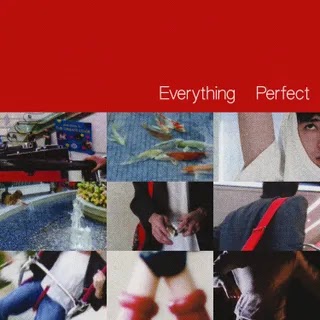Each Sunday, Pitchfork takes an in-depth look at a significant album from the past, and any record not in our archives is eligible. Today we revisit an uncompromising debut, pop music that ventures to the extremes of sound and emotion.
After the early sessions for her debut album, Sinéad O’Connor went home and studied the peak meter on her personal recording device, singing to herself, alone. The green light meant she was in the proper range to be recorded; yellow meant she was in danger of clipping; red meant she was too loud. Because the label had paired her with a producer she did not trust, or particularly like, the teenage songwriter from Dublin realized she would have to internalize these metrics in order to preserve her music the way it sounded in her head. “So I’ve made my voice into its own master fader,” she wrote in her memoir, Rememberings.
Even after she fired the producer and took his place—scrapping the sessions and starting over, putting herself in a hundred-thousand pounds of debt before the album’s release in November 1987—this would be an important lesson in control and self-reliance. These were songs that lived in extremes. The accompaniment was often barely there: a wash of ambience, layered acoustic guitars, a Bible passage recited in Gaelic by Enya. Or it was a full-on attack: shoegaze drones, blaring strings, military drums, and dance beats.
And then there’s her voice. It has the elucidating quality of light through stained glass but can just as easily become a tempest, shattering windows and leaving the interiors raw and wrecked. She would go on to record albums of traditional Irish folk music and roots reggae, transform a Loretta Lynn song into an apocalyptic showtune, rap about the Great Irish Potato Famine, and manage never once to sound ridiculous doing any of it. To this day, the best visualization of her gift remains a steady, close-up of her face with a tear rolling down her cheek. She sings and you cannot look away.
The Lion and the Cobra, like all of O’Connor’s albums, requires active participation: a listener on the edge of their seat, a hand near the volume knob, a constant feeling of unease. O’Connor has confessed to furnishing the Irish mountaintop home where she lives alone with “deliberately” uncomfortable chairs: “I don’t like people staying long.” Her albums take a similar approach. They seem to peak with negative space. Even at her most accessible, O’Connor wants you to hear the way she summons this music from the dark, quiet places where it has been buried; it floods and calms and stretches beyond our sight, like the sky after a storm.
In songs like “Mandinka” and “Jerusalem,” the magic is in the interplay between O’Connor’s voice and the bed of cavernous rock music: how she stretches the titles into one-word choruses, weaving the syllables through their knotty arrangements. In the refrain of “Mandinka,” a song about a young woman refusing tradition, the guitar riff rises and falls as drum rolls echo in the right and left channel. Even with these flourishes, her voice, double-tracked and coated in reverb, is the center of everything. The song is delivered like a miniature symphony. You can sing along with every little moment, each placed just so in the soundfield.
O’Connor never considered herself a pop artist, but she immediately had a knack for getting in people’s heads. Before she broke through with a ghostly rendition of Prince’s “Nothing Compares 2 U,” she sought a different thrill in The Lion and the Cobra’s “I Want Your (Hands on Me).” It’s her rare song that feels modeled after hits of the era, an early attempt at blending her blunt-force, hip-hop influence with gentler melodic gifts. At the time, she called it a “tongue in cheek song about sex,” and it would eventually receive a dance remix with a verse from MC Lyte about how, despite the seduction in its title, “When I say no, yo, I mean no.” The hook feels almost preverbal as she finds ways to subvert the directness: “Put ’em on, put ’em on, put ’em on me,” O’Connor sings until the words bleed into the rhythm.
These simple pleasures exist in a different universe than “Troy,” a dark, ambitious ballad with lyrics ranging from Yeats allusion to dragon-killing fantasy, breathless apology to full-throated rage. On the album, her words are backed by a string section responding to each shift in her inflection. In concert, she would sing it with just a 12-string guitar, her voice trembling then crashing like something heavy dropped suddenly from above. It is one of the only songs on the album she admitted to being autobiographical at the time. The lyrics were addressed in part to her abusive mother who died in a car crash when O’Connor was 19, but who would haunt her life and work long after. “I couldn’t admit it was her I was angry at,” she would later reflect, “so I took it out on the world.”
During a troubled childhood, O’Connor escaped through the radio. She was sensitive to music: violently repelled by what she hated, like her sister’s Barry Manilow poster, and obsessively devoted to what she loved, like Bob Dylan. One of her favorites was his 1979 album Slow Train Coming, the start of the icon’s brief run as a born-again Christian songwriter, a polarizing and misunderstood period in his career. O’Connor counts herself as one of the era’s few disciples. As recently as this month, you could spot the record in her home, perched behind her shoulder during interviews—the patron saint of hearing the audience boo and cranking it up anyway. Which, of course, is precisely what she did when she had the chance to honor Dylan at his 30th Anniversary tribute show.
At the time of that performance in October 1992, O’Connor could count plenty of reasons why her audience might be dismissive—at first, she thought they just didn’t like her outfit. But there was also the controversy with the national anthem. She claimed she had been given the option for it to be played before a concert in New Jersey, and she had politely said no; media reports soon emerged that she refused to perform if she heard it playing. There was also, of course, the time she appeared on Saturday Night Live and tore a photo of the pope that once belonged to her mother—removed from the wall while she was cleaning the house after her death—and made an unrehearsed statement against the Church’s history of child abuse. “Fight the real enemy” was the clearest way she could think to communicate her message. Many viewers took it as a provocation to fight her directly.
But for a while, everyone was listening. When O’Connor performed “Mandinka” at the 1989 Grammy Awards—with the Public Enemy logo dyed into her hair in solidarity with the radical hip-hop artists snubbed by award ceremonies—she appeared genuinely gleeful, received by rapturous applause. Completely alone on an enormous stage, she swiveled around and shook her knees, singing pitch-perfect at the top of her lungs in a black halter top and jeans. The performance is radiant and definitive, delivered for an audience of insiders who would, at best, completely turn their backs on her or, at worst, actively derail her career, all within the next few years.
While O’Connor’s relationship with the music industry and press grew increasingly thorny, it was also a conscious retreat as she grew exhausted with the mainstream. On The Lion and the Cobra, you can hear her planting flags in the places where she would later take sanctuary. The piercing balladry of “Just Like U Said It Would Be” previews the pared-back exorcisms of 1994’s Universal Mother; the old-Irish mysticism of “Never Get Old” would be a refuge in 2002’s extraordinary Sean-Nós Nua. And like the fragmented opener “Jackie,” narrated by a woman waiting every day for her lost husband to return from sea, defying the warnings of her community, some of her best later work was delivered in the form of mantras, secluded from the noise of the world around her. “I am enough for myself,” she affirms in one of them, a lesson she would spend the following decades accepting.
Within a few years of its release, O’Connor was already distancing herself from the blinding rage and catharsis of The Lion and the Cobra: “Now I’m an old woman of 23,” she explained in a whisper, only half-kidding. “I don’t feel as angst-ridden as I did when I was 15.” She was adamant about not being defined by the pain in her songs. After Kurt Cobain’s death in 1994, she spoke about her desire to offer another path to her fans: “The tragedy is that he could’ve got out of it if he’d had more faith that he could,” she suggested. “I’m very conscious of wanting to show people it can be done, putting it right before their eyes.”
In 1987, O’Connor was beginning to accept this wisdom, but her faith was being tested daily. When she fell in love with her drummer, John Reynolds, and became pregnant with her first child, the label encouraged her to get an abortion. “I was very upset and very hurt. How could I choose between my career or a child?” she told Rolling Stone three years later, in a profile that coincided with “Nothing Compares 2 U” reaching No. 1 on the Billboard charts. “I wanted the baby—and I decided to have it.” And so she did: Jake was born that summer. The Lion and the Cobra arrived in the fall, and with it, O’Connor’s life in the public eye began.
O’Connor’s music became her armor during these battles, her fortress as the world slowly closed in on her. 1990’s I Do Not Want What I Haven’t Got expanded the debut’s emotional canvas in ways that welcomed an entire record-buying public, but The Lion and the Cobra, dense as a dark cloud, proudly bent to the whims of only its creator. Consider the end of “Troy,” when O’Connor delivers one of its pivotal lines—“Every look that you threw told me so”—raising her voice to a harrowing climax. As the sound grows distorted in the mix, she prolongs the note, louder and louder, as if trying to break through the monitor—an early attempt at fighting the mechanisms that delivered her message, of testing her limits. Or maybe just to be heard.
Depending on where you live, there are two different covers for The Lion and the Cobra. For the American release, the label went with an angelic portrait of O’Connor with her arms crossed against her chest, eyes cast downward, mouth shut before a glowing, white background. It was an alternate option to the one she preferred, used throughout the rest of the world. There, her mouth is open, eyebrows arched, shoulders thrown back slightly, capturing her in constant motion and placing the image in a kind of blur. As a young artist’s introduction to a new audience, this depiction was deemed a little too angry, too provocative. In Rememberings, O’Connor recalls the shoot. The photographer was playing the album back, encouraging her to respond naturally as the cameras flashed. “I look like I’m screaming,” she writes. “In fact, I was singing.”














%20Music%20Album%20Reviews.webp)

0 comments:
Post a Comment